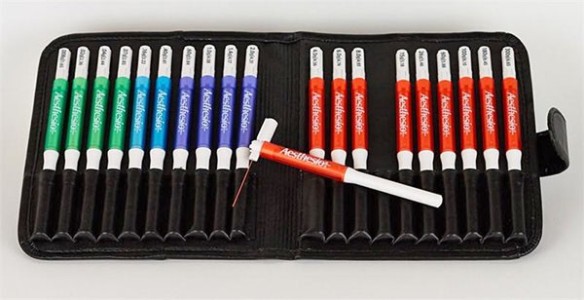Authors
I. Yalcin, L.-H. Tessier, N. Petit-Demoulière, S. Doridot, L. Hein et al.
Lab
Institut des Neurosciences Cellulaires et Intégratives, Centre National de la Recherche Scientifique and Université de Strasbourg, Strasbourg, France
Journal
Neurobiology of Disease
Abstract
Neuropathic pain is a disease caused by a lesion or dysfunction of the nervous system. Antidepressants or anticonvulsants are presently the best available treatments. The mechanism by which antidepressants relieve neuropathic pain remains poorly understood. Using pharmacological and transgenic approaches in mice, we evaluated adrenergic receptor (AR) implication in the action of the tricyclic antidepressant desipramine, the noradrenaline and serotonin reuptake inhibitor venlafaxine, and the noradrenaline reuptake inhibitor reboxetine. Neuropathy was induced by cuff insertion around the sciatic nerve. We showed that chronic antidepressant treatment suppressed cuff-induced allodynia in wild-type mice but not in _2-AR deficient mice, and/or that this antiallodynic action was blocked by intraperitoneal or intrathecal injection of the _2-AR antagonist ICI 118,551 but not by the _2-AR antagonist yohimbine. We also showed that the anticonvulsant gabapentin was still effective in _2-AR deficient mice. Our results demonstrate that _2-ARs are essential for the antiallodynic action of antidepressant drugs.
BIOSEB Instruments Used
Von Frey Filaments (Bio-VF-M)
Source :
http://www.sciencedirect.com/science/article/pii/S0969996108002817

 Douleur - Allodynie/Hyperalgésie Thermique
Douleur - Allodynie/Hyperalgésie Thermique Douleur - Spontanée - Déficit de Posture
Douleur - Spontanée - Déficit de Posture Douleur - Allodynie/Hyperalgésie Mécanique
Douleur - Allodynie/Hyperalgésie Mécanique Apprentissage/Mémoire - Attention - Addiction
Apprentissage/Mémoire - Attention - Addiction Physiologie & Recherche Respiratoire
Physiologie & Recherche Respiratoire




































 Douleur
Douleur Système Nerveux Central (SNC)
Système Nerveux Central (SNC)  Neurodégénérescence
Neurodégénérescence Système sensoriel
Système sensoriel Système moteur
Système moteur Troubles de l'humeur
Troubles de l'humeur Autres pathologies
Autres pathologies Système musculaire
Système musculaire Articulations
Articulations Métabolisme
Métabolisme Thématiques transversales
Thématiques transversales Congrès & Meetings
Congrès & Meetings 